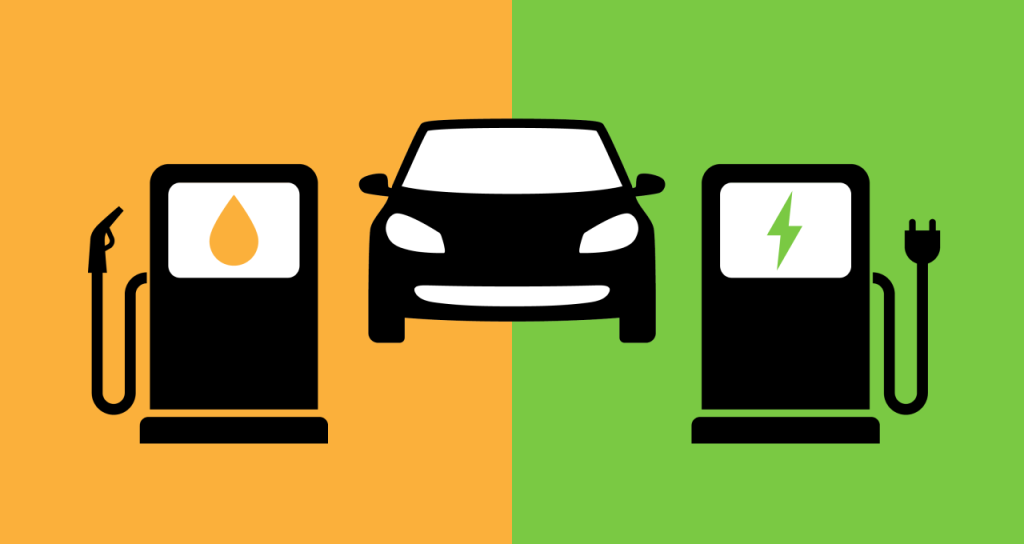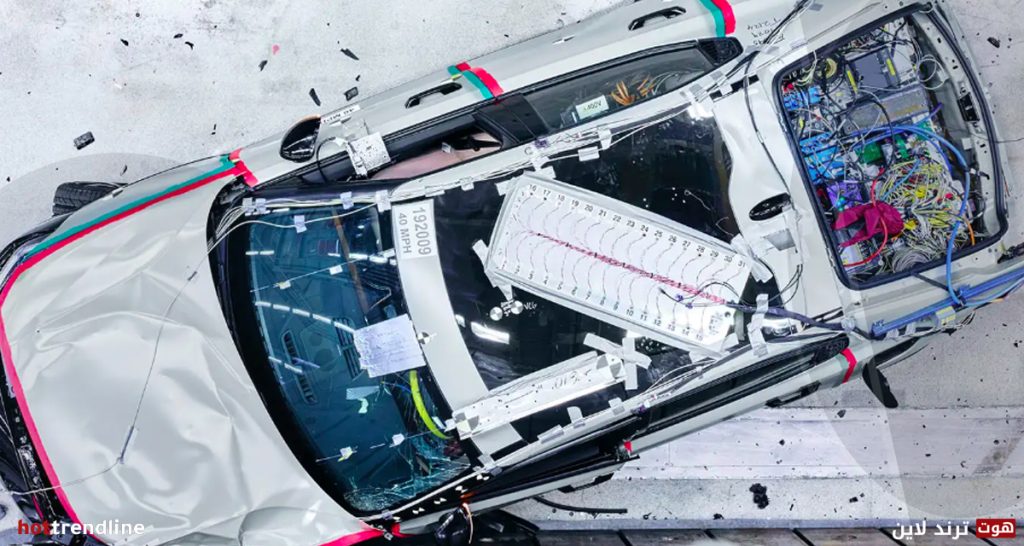EVs against Conventional ..A notable transition has occurred in the automotive sector towards electric vehicles, primarily driven by their reduced ecological footprint and the prospect of enduring financial benefits. In contrast to conventional automobiles, safety remains a significant concern despite this transition.
Summary
EVs against Conventional
EVs and internal combustion engine (ICE) vehicles each have their own set of safety considerations, and the severity of an accident is contingent on a number of variables. Let’s examine the critical areas to determine which technology could provide a safety advantage in a collision between conventional automobiles and electric vehicles.
CAR CRASH: EVALUATING THE DIFFERENCES BETWEEN EVS AND ICE CARS
Before comparing EVs to gasoline-powered vehicles in a collision, it is essential to define what makes these vehicles unique.
Contrasts in design
Electric vehicles are distinguished from their gasoline-powered counterparts by their design. The primary distinction resides in the configuration of the power supply. Rather than ICE vehicles, which have cumbersome engines located in the front, electric vehicles store their battery cells throughout the floor. The result of this reduced center of gravity is enhanced stability and maneuverability. A lower center of gravity also significantly reduces the likelihood of rollovers, which is an important safety benefit.
ZONE OF CRUMPLE OPTIMIZATION
In EVs, the lack of a cumbersome engine up front permits the implementation of a more strategically planned crumple zone. By virtue of their ability to absorb impact energy, these zones safeguard the passenger compartment in the event of a collision. Furthermore, numerous electric vehicles employ the front trunk area as a buffer zone to bolster collision protection.

WHAT WEIGHT IS CONSIDERED
Although the weight of the battery cell enhances stability, in specific collision scenarios it may also have an effect on the stopping distance and overall performance of the vehicle. The optimization of safety continues to be a critical consideration for electric vehicle (EV) manufacturers in regards to weight distribution.
ASSOCIATED SAFETY FEATURES: A UNITEDST
Thankfully, sophisticated safety features are becoming more prevalent in both EVs and contemporary ICE vehicles. The implementation of safety features such as blind-spot monitoring, automatic emergency braking, and lane departure warning can substantially mitigate the likelihood of collisions.
In addition, some electric vehicles are equipped with features that are tailored to their electric nature. As an illustration, specific models incorporate a mechanism that disables the battery’s power supply automatically in the case of a collision. This further reduces the likelihood of electrical hazards and is one of the environmental benefits of electric vehicles.
DANGERS ALIENT TO EVS IN COMPARISON TO ICE CARS IN CRASHES
Several hazards are associated with EVs in a collision compared to ICE vehicles:
FIRE DANGER
An frequently expressed apprehension regarding electric vehicles (EVs) is the possibility of battery explosions. When damaged, lithium-ion batteries have the potential to catch fire or ignite, posing a fire hazard for electric vehicles.
Despite this, numerous safety features have been implemented by manufacturers to mitigate these dangers. To prevent overcharging and overheating, for instance, a robust Battery Management System (BMS) is installed in many electric vehicles (EVs). This system monitors the battery’s temperature and state of charge. Furthermore, protective barriers are frequently incorporated into the overall structure of electric vehicles (EVs) to enclose the battery cell and mitigate potential harm in the case of a collision.
Fortunately, there are ways to prevent electric vehicles from taking fire, the most important of which are compatible adapters and battery maintenance.
Conversely, gasoline-powered vehicles transport a substantial quantity of combustible fuel. A ruptured fuel line or tank can cause a fire, which can be catastrophic, in the event of an accident. Although EV battery fires are a distinct possibility, their occurrence is typically less probable compared to petrol fires.Response to an emergency and extrication
When comparing EVs and conventional cars in the event of a collision, the response of emergency personnel following an electric vehicle collision is an additional factor to consider. Unlike internal combustion engine (ICE) vehicles, which have recognizable components like fuel containers and engines, extrication from an EV requires specialized knowledge and equipment. This is due to the electric vehicles’ high-voltage battery packs.
It is essential to note, nevertheless, that this is only a transient obstacle. As the prevalence and development of electric vehicles continue to expand, there is a noticeable rise in the provision of training for emergency responders regarding the safe management of incidents involving EVs. Furthermore, numerous electric vehicle (EV) manufacturers offer assistance and direction to emergency personnel in order to guarantee the efficacy of rescue and response protocols.

DO ELECTRIC CARS CAUSE MORE DETAIL DURING A CRASH?
THE COMPLETE VERDICT
When addressing the question of whether electric vehicles are safer in collisions than conventional automobiles, it is crucial to acknowledge that each category possesses advantages and disadvantages with regard to impact safety. However, EVs appear to have a minor advantage due to their superior design, sophisticated safety features, and environmental benefits. However, battery fires present a distinct challenge, despite being less probable.
In contrast, internal combustion engine (ICE) vehicles possess a firmly established safety record and their fire hazard is widely recognized. The presence of combustible fuel, nevertheless, adds an additional level of peril.
That was the crux of the discussion regarding the safety of electric vehicles versus conventional automobiles in collisions. Safety in auto accidents is a complex matter, which is the primary insight to be gleaned. Continuous research and the development of new technologies elevate the safety standards for all vehicles.
Consequently, EVs serve as an optimal alternative to gasoline vehicles because they circumvent concerns such as ecological footprints, escalating petrol prices in the UAE and worldwide, and numerous others.
Do electric vehicles pose a greater safety risk than ice cars?
Yes, numerous factors contribute to the superior performance of EVs in comparison to conventional automobiles. These include advanced safety features and a reduced center of gravity, both of which contribute to enhanced structural integrity. This article describes the fundamental characteristics that classify EVs as safer than gasoline-powered vehicles.
WHAT EV REGULATIONS ARE ESTABLISHED BY THE GOVERNMENT OF THE UAE?
The EV regulations of the UAE are applicable to EVs that have a GVW not exceeding 3,500 kg. In addition, prior to their release in the UAE, all EVs are required to pass a performance test in accordance with these regulations.
